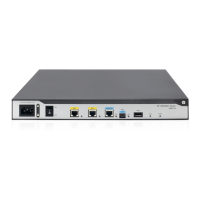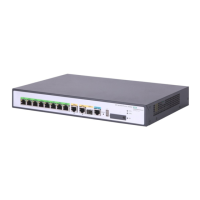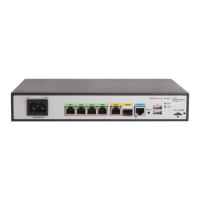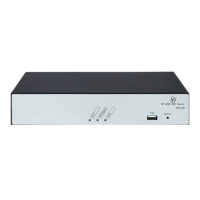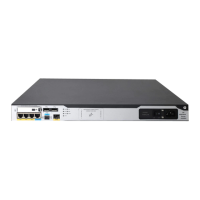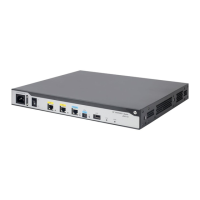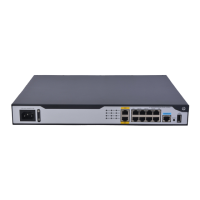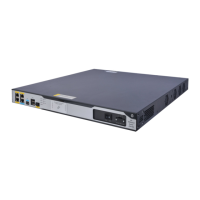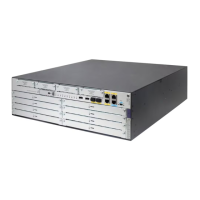Configuring a CE1/PRI interface in E1 mode
Step Command Remarks
1. Enter system view.
system-view N/A
2. Enter CE1/PRI interface view.
controller e1 number N/A
3. Configure the interface to
operate in E1 mode.
using e1
By default, a CE1/PRI interface
operates in CE1/PRI mode.
4. (Optional.) Configure the
interface to perform alarm
indication signal (AIS) test.
detect-ais
Optional.
By default, AIS test is performed.
5. (Optional.) Set other interface
parameters.
See "Configuring other CE1/PRI
interface parameters."
N/A
After you configure the CE1/PRI interface to operate in E1 mode, the system automatically creates a
serial interface numbered serial interface-number:0. This interface has the same logical features as a
standard synchronous serial interface and supports the following configurations:
• Data link protocols, such as PPP and HDLC.
• IP addressing.
• Interface backup settings if the interface is used as a primary or backup interface.
• NAT and packet filtering if a firewall is to be set up.
Configuring a CE1/PRI interface in CE1 mode
Step Command Remarks
1. Enter system view.
system-view N/A
2. Enter CE1/PRI interface view.
controller e1 number N/A
3. Configure the interface to
operate in CE1/PRI mode.
using ce1
The default operating mode is
CE1/PRI mode.
4. Bundle timeslots on the
interface into a channel set.
channel-set set-number timeslot-list
list
By default, no channel set is
created.
The timeslots on a CE1/PRI
interface can be bundled into
either channel sets or a PRI set, but
not the both at the same time.
5. Set the framing format.
frame-format { crc4 | no-crc4 } The default is no-CRC4.
6. (Optional.) Enable RAI
detection on the interface.
alarm-detect rai
By default, RAI detection is
enabled on the interface.
7. (Optional.) Set other interface
parameters.
See "Configuring other CE1/PRI
interface parameters."
N/A
A CE1/PRI interface in CE1/PRI mode can operate as a CE1 interface. You can bundle timeslots on a
CE1/PRI interface into up to 31 channel sets.
22
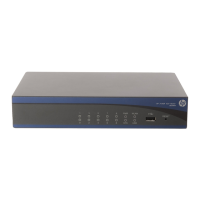
